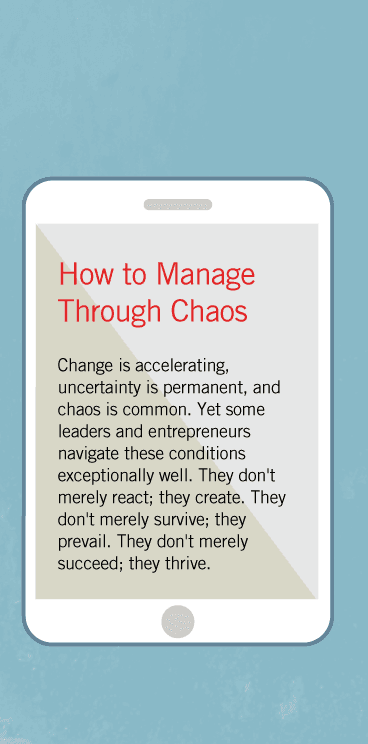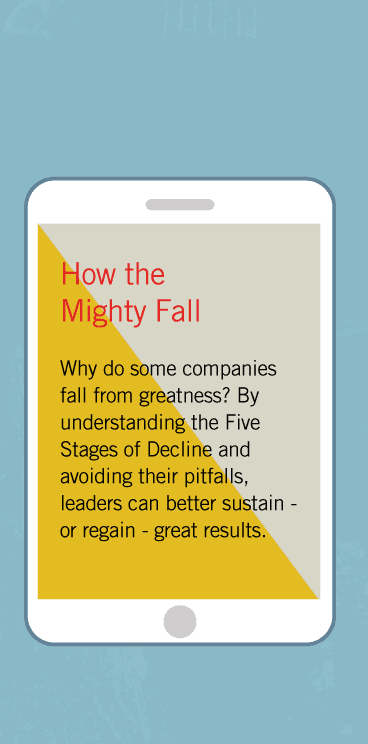Hedgehog Concept in the Business Sectors
More precisely, a Hedgehog Concept is a simple, crystalline concept that flows from deep understanding about the intersection of the following three circles:
- What you can be the best in the world at (and, equally important, what you cannot be the best in the world at). This discerning standard goes far beyond core competence. Just because you possess a core competence doesn’t necessarily mean you can be the best in the world at it. Conversely, what you can become the best at might not even be something in which you are currently engaged.
- What drives your economic engine. All the good-to-great companies attained piercing insight into how to most effectively generate sustained and robust cash flow and profitability. In particular, they discovered the single denominator—profit per x—that had the greatest impact on their economics. (It would be cash flow per x in the social sector.)
- What you are deeply passionate about. The good-to-great companies focused on those activities that ignited their passion. The idea here is not to stimulate passion but to discover what makes you passionate.
To quickly grasp the three circles, consider the following personal analogy. Suppose you were able to construct a work life that meets the following three tests. First, you are doing work for which you have a genetic or God-given talent, and perhaps you could become one of the best in the world in applying that talent. ("I feel that I was just born to be doing this.") Second, you are well paid for what you do. ("I get paid to do this? Am I dreaming?") Third, you are doing work you are passionate about and absolutely love to do, enjoying the actual process for its own sake. ("I look forward to getting up and throwing myself into my daily work, and I really believe in what I'm doing.”) If you could drive toward the intersection of these three circles and translate that intersection into a simple, crystalline concept that guides your life choices, then you’ve got a Hedgehog Concept for yourself.
To have a fully developed Hedgehog Concept, you need all three circles. If you make a lot of money doing things at which you could never be the best, you'll only build a successful company, not a great one. If you become the best at something, you'll never remain on top if you don't have intrinsic passion for what you are doing. Finally, you can be passionate all you want, but if you can't be the best at it or it doesn't make economic sense, then you might have a lot of fun, but you won't produce great results.
UNDERSTANDING WHAT YOU CAN (AND CANNOT) BE THE BEST AT
"They stick with what they understand and let their abilities, not their egos, determine what they attempt." So wrote Warren Buffett about his $290 million investment in Wells Fargo despite his serious reservations about the banking industry. Prior to clarifying its Hedgehog Concept, Wells Fargo had tried be a global bank, operating like a mini-Citicorp, and a mediocre one at that. Then, at first under Dick Cooley and then under Carl Reichardt, Wells Fargo executives began to ask themselves a piercing set of questions: What can we potentially do better than any other company, and, equally important, what can we not do better than any other company? And if we can't be the best at it, then why are we doing it at all?
Putting aside their egos, the Wells Fargo team pulled the plug on the vast majority of its international operations, accepting the truth that it could not be better than Citicorp in global banking. Wells Fargo then turned its attention to what it could be the best in the world at: running a bank like a business, with a focus on the Western United States. That's it. That was the essence of the Hedgehog Concept that turned Wells Fargo from a mediocre Citicorp wanna-be to one of the best-performing banks in the world.
Carl Reichardt, CEO of Wells Fargo at the time of transition, stands as a consummate hedgehog. While his counterparts at Bank of America went into a reaction-revolution panic mode in response to deregulation, hiring change gurus who used sophisticated models and time-consuming encounter groups, Reichardt stripped everything down to its essential simplicity. "It's not space science stuff,” he told us in our interview. “What we did was so simple, and we kept it simple. It was so straightforward and obvious that it sounds almost ridiculous to talk about it. The average business man coming from a highly competitive industry with no regulations would have jumped on this like a goose on a June bug.”
Reichardt kept people relentlessly focused on the simple hedgehog idea, continually reminding them that “there’s more money to be made in Modesto than Tokyo.” Those who worked with Reichardt marveled at his genius for simplicity. “If Carl were an Olympic diver,” said one of his colleagues, “he would not do a five-flip twisting thing. He would do the best swan dive in the world, and do it perfectly over and over again."
The Wells Fargo focus on its Hedgehog Concept was so intense that it became, in their own words, “a mantra.” Throughout our interviews, Wells Fargo people echoed the same basic theme— “It wasn’t that complicated. We just took a hard-nosed look at what we were doing, and decided to focus entirely on those few things we knew we could do better than anyone else, not getting distracted into arenas that would feed our egos and which we could not be the best.”
This brings me to one of the most crucial points of this chapter: A Hedgehog Concept is not a goal to be the best, a strategy to be to be the best, an intention to be the best, a plan to be the best. It is an understanding of what you can be the best at. The distinction is absolutely crucial.
Every company would like to be the best at something, but few actually understand—with piercing insight and egoless clarity—what they actually have the potential to be the best at and, just as important, what they cannot be the best at. And it is this distinction that stands as one of the primary contrasts between the good-to-great companies and the comparison companies.






